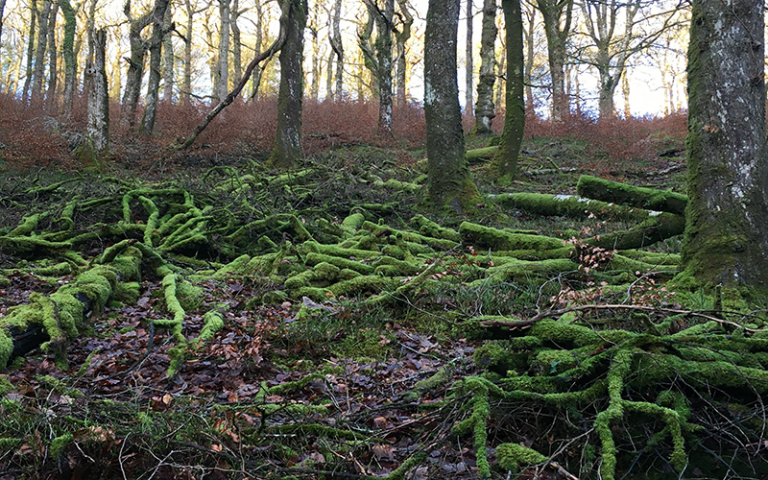Opinion: Individual responsibility is key to addressing climate change
19 February 2020
Governmental action will be crucial in tackling global climate change, but individuals can also take steps and play a major role. Here Professor Gabriel Waksman (UCL Biosciences) writes about his own eco-anxiety and why he's been planting trees to combat carbon emissions.

During my almost 30 years as an academic and scientist, I have clocked up thousands of air miles. I have travelled from international conferences to grant-review panels, from invited seminars abroad to lectures at foreign institutions. These journeys emitted many tonnes of carbon dioxide and other pollutants.
Although frequently useful for communicating my results and finding inspiration for experiments, travelling has a significant environmental cost, which we must reduce.
Governmental action will be crucial in solving the problem of climate change, but individual responsibility has a major part to play. If travelling to conferences must remain part of a scientist’s life, what might be the best way to offset the carbon that will inevitably be released?
There are many possible approaches, but I was especially drawn to native tree planting. Carbon needs to be withdrawn from the atmosphere and I liked the idea of coupling carbon fixing with reconnecting to a wonder of nature such as a native woodland.
I decided to set up the charity All Things Small and Green and created a website where you can calculate your carbon emissions in tonnes, and work out how many native trees you need to plant to offset those, using a simple formula. These trees can then be planted in groves that we have set up with Trees For Life, an environmental charity based in Forres, UK, that aims to restore the Caledonian forest, a biodiverse and native habitat that once covered vast expanses of land in the highlands of Scotland. Any tree added to a grove will be planted by Trees for Life on its Dundreggan estate or the other estates that it manages. Together, all the groves will eventually grow into a large forest.
The concept of groves is particularly appealing to me. We created a grove for scientists and for other groups or communities (a ‘Friends’ grove for the friends of our charity and an ‘Academics’ one for colleagues who are not scientists). Once a grove is set up, anyone can add trees to it. Companies, universities and institutions can ask us or Trees for Life directly to create a grove for them, to which their members will be able to add trees. The grove idea provides a sense of ownership to anyone contributing, and I hope this will stimulate a healthy sense of tree-planting competition.
It is important to me, as a biologist, to ensure that the trees we work with are native. Native afforestation (creating new forests using native trees) and native reforestation (restoring old woodlands) increase biodiversity and restore degraded ecosystems. By contrast, monoculture conifer plantations — wrongly favoured by some governments — destroy biodiversity and damage natural ecosystems through soil acidification, depletion and compaction, among other detrimental effects.
Planting trees in the United Kingdom is also important to me. The country has ample scope for reforestation because its forest cover is much less than the European average. Afforestation efforts by UK-based partner organizations can also be readily verified by tree donors in the country — because their tree-planting sites are easily accessible. Their activities are compliant with the Woodland Carbon Code, a rigorous governmental standard for UK woodland-creation projects. I also volunteer to plant trees with partner organizations on a regular basis, and I can thus work with them to get the most out of the tree donations from our charity. The charity would like to expand this model to similar partners in other European countries so that our colleagues outside the United Kingdom can contribute to reforestation programmes.
Personally, an incidental outcome of this initiative has been my increased involvement in tree planting, from which I, my family and my friends have derived great joy. This is also one of the most selfless activities I have taken part in. A native woodland takes decades to come to maturity, so the results of my tree planting will hopefully be enjoyed by people much younger than me.
The original article was published in Nature on 14 February, 2020.
Links
- Original article published in Nature
- Professor Gabriel Waksman’s academic profile
- UCL Biosciences
- All Things Small and Green (registered charity)
- Sustainable UCL
Image
Moss-covered trees in a woodland near the River Barle in Devon, UK.Credit: Gabriel Waksman
 Close
Close

